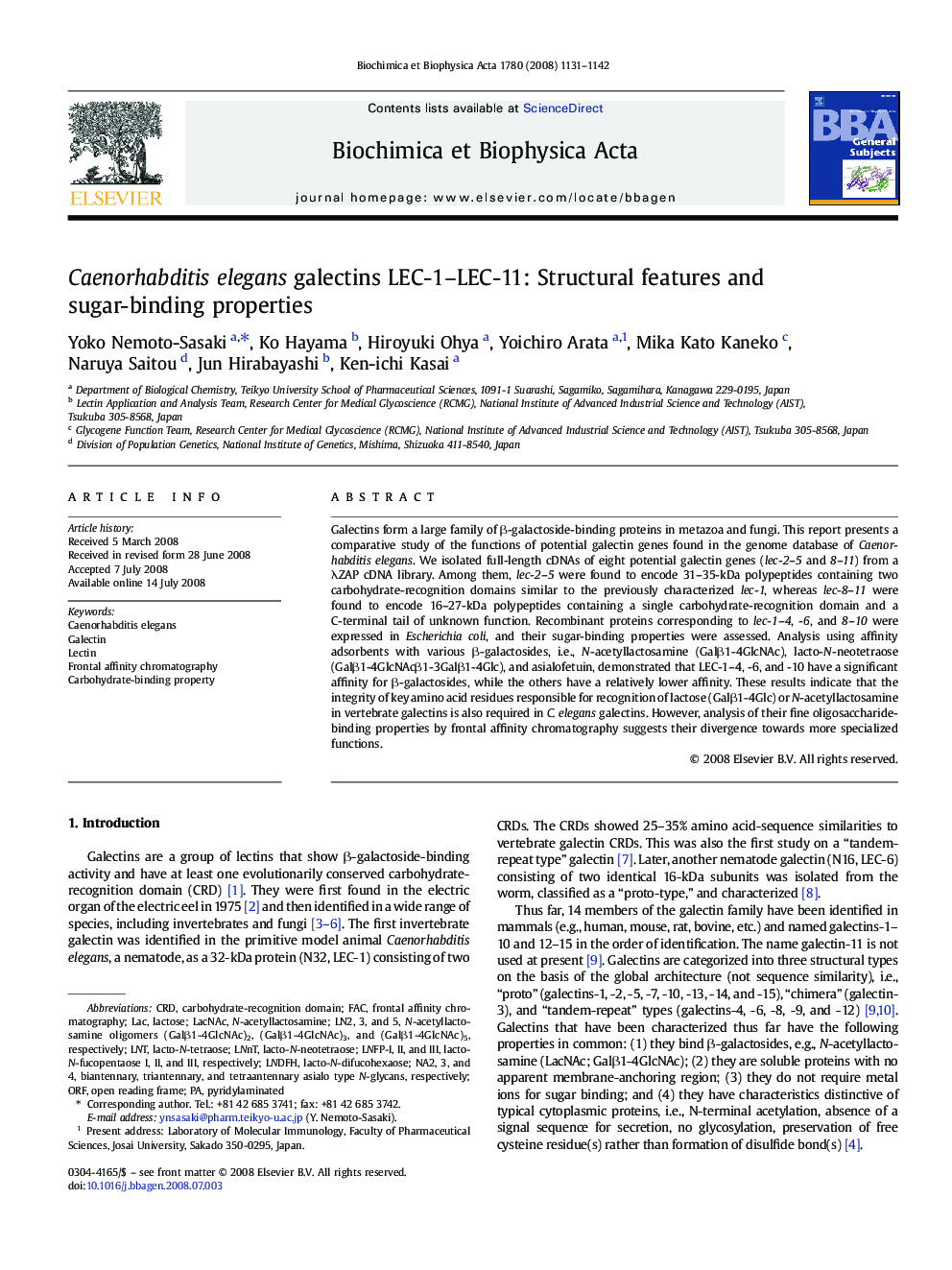| Article ID | Journal | Published Year | Pages | File Type |
|---|---|---|---|---|
| 1948384 | Biochimica et Biophysica Acta (BBA) - General Subjects | 2008 | 12 Pages |
Galectins form a large family of β-galactoside-binding proteins in metazoa and fungi. This report presents a comparative study of the functions of potential galectin genes found in the genome database of Caenorhabditis elegans. We isolated full-length cDNAs of eight potential galectin genes (lec-2–5 and 8–11) from a λZAP cDNA library. Among them, lec-2–5 were found to encode 31–35-kDa polypeptides containing two carbohydrate-recognition domains similar to the previously characterized lec-1, whereas lec-8–11 were found to encode 16–27-kDa polypeptides containing a single carbohydrate-recognition domain and a C-terminal tail of unknown function. Recombinant proteins corresponding to lec-1–4, -6, and 8–10 were expressed in Escherichia coli, and their sugar-binding properties were assessed. Analysis using affinity adsorbents with various β-galactosides, i.e., N-acetyllactosamine (Galβ1-4GlcNAc), lacto-N-neotetraose (Galβ1-4GlcNAcβ1-3Galβ1-4Glc), and asialofetuin, demonstrated that LEC-1–4, -6, and -10 have a significant affinity for β-galactosides, while the others have a relatively lower affinity. These results indicate that the integrity of key amino acid residues responsible for recognition of lactose (Galβ1-4Glc) or N-acetyllactosamine in vertebrate galectins is also required in C. elegans galectins. However, analysis of their fine oligosaccharide-binding properties by frontal affinity chromatography suggests their divergence towards more specialized functions.
